Using cars to measure rainfall
28 November 2013
When driving a car in the rain, drivers turn on the windscreen wipers to make sure they can see the road clearly. Depending on the amount of rain, if it is heavy or just drizzle, they adjust the speed of the wipers: the heavier the rain the faster the wipers need to work. A team of scientists in Germany, led by Uwe Haberlandt and Ehsan Rabiei, used this observation to come up with a new way to measure rainfall. A car with a driver was placed under a rain machine that produced more and more rain over time. The team found that the driver reacted to the different amounts of rain by changing the speed of the windscreen wipers, depending on how well they could see out of the windscreen. The researchers concluded that this could be a good way of measuring the strength of the rain. But, because it is completely dependent on the driver, this method is not the most reliable. Some modern cars also have sensors that can measure the amount of rain falling on the windscreen and tell the windscreen wipers to wipe faster or slower. The scientists tested cars with these sensors in the rain machine and found that this method was more accurate, without human error. On the roads, cars will have to deal with lots of movement, spray from other cars and winds – conditions that can’t be tested easily in a lab. However, this research is still useful as scientists can gather lots more data from the many cars on the road: there are over 270 million cars in the European Union alone! Uwe and Ehsan are now taking their experiment out of the lab and into the real world to better test ways of using cars to measure rainfall. With more accurate information about the amount of rainfall in more places, scientists can help governments to prepare people for floods.Print version
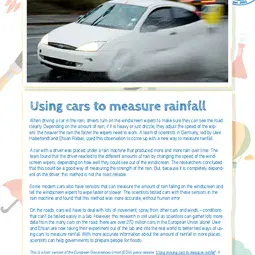
This is a kids' version of the EGU article: 'Using cars to measure rainfall'. It was written by Jane Robb and reviewed for scientific content by Lucy Clarke and Alice Aubert and for educational content by Rachel Hay.
Translations
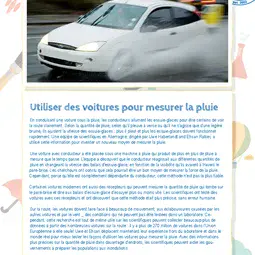
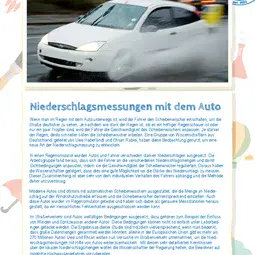
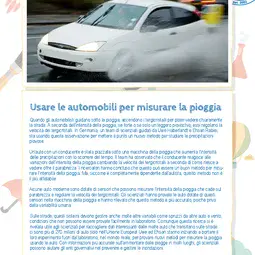
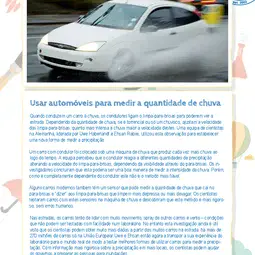
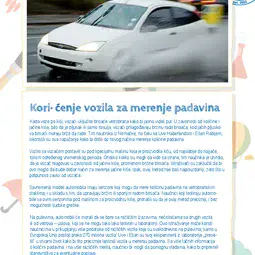
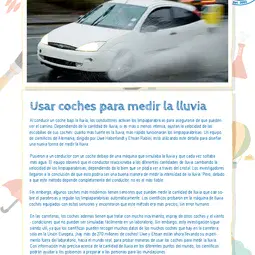
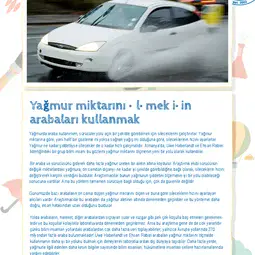
All English-language Planet Press releases are carefully edited, reviewed and proofed, by scientists, educators and EGU staff. Please note that once translated, Planet Press releases receive no further checks from EGU staff. For this reason, we cannot guarantee their accuracy, though we trust the quality of our voluntary translators and are grateful for their work.

